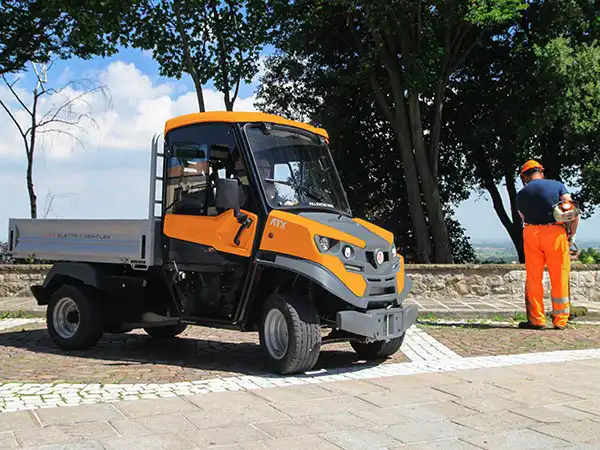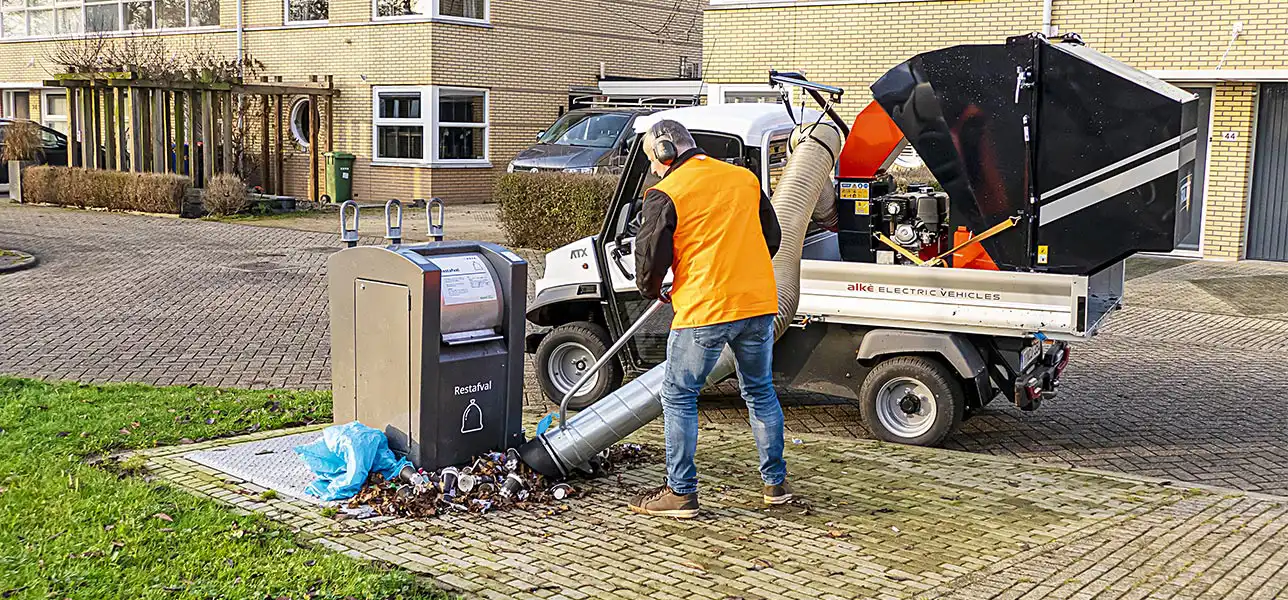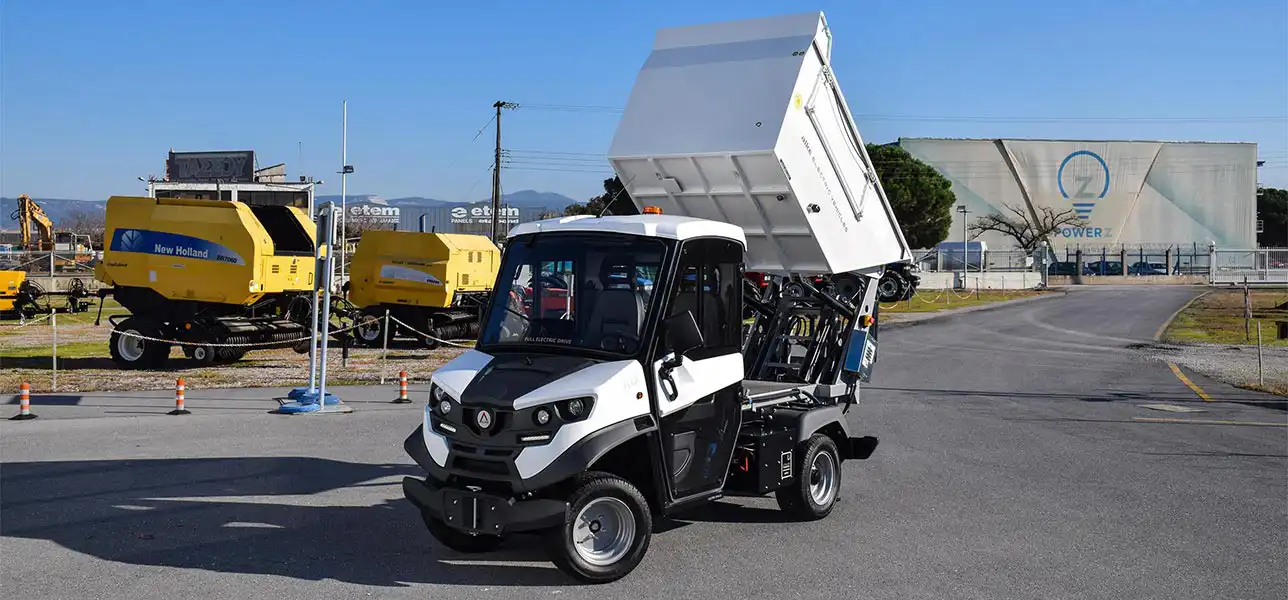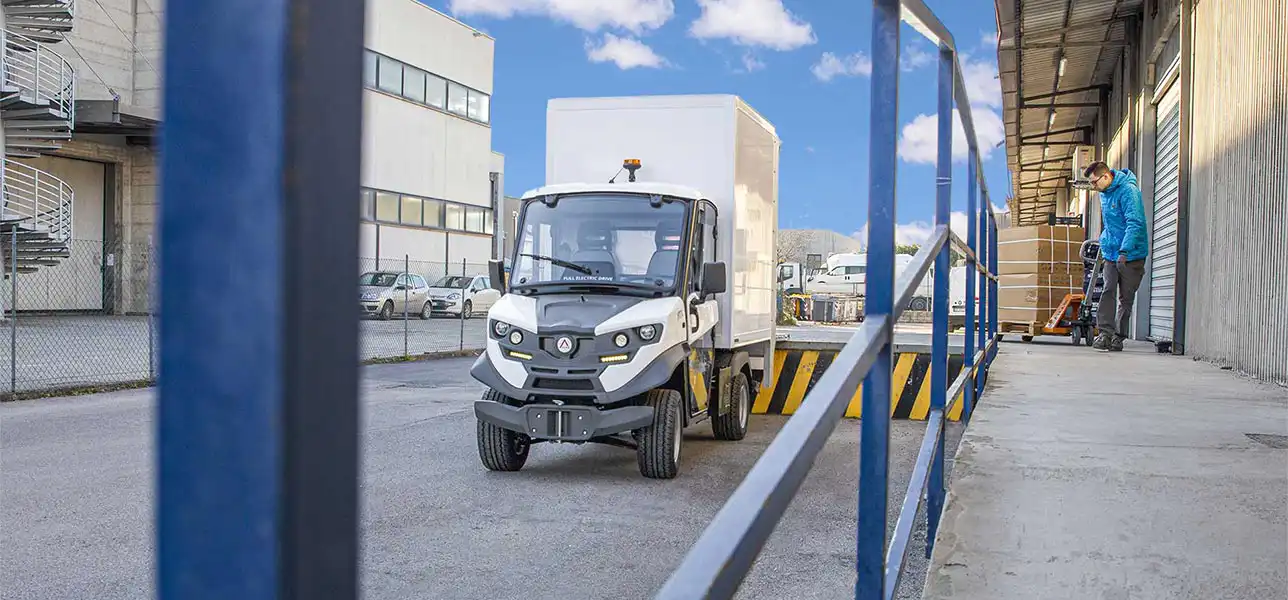

Green transition to electric utility vehicles
Green vehicles include a wide range of vehicles used not only in urban areas but also in sectors such as industry, agriculture, tourism and many other applications. The adoption of electric solutions represents a significant step towards a greener future.
The benefits of the green transition in the workplace:
- Decrease of harmful emissions
- Quietness that reduces noise pollution
- Reduction of operating costs
- Possibility of using self-generated energy

All the advantages of the electric transition for public green spaces
The electric transition of public green vehicles is an increasingly important topic in the context of the current global effort to reduce environmental impact and promote sustainability. Until recently, few people chose electric in the workplace, now it is a normal choice in both the public and private sectors. We are in the presence of a general vision towards electric mobility, there is an acceleration in this sector. In urban areas, electric vehicles are chosen for objective reasons, such as reduced operating costs, as well as for environmental concerns. Electric utility vehicles are mostly chosen for use in confined areas where high autonomy is not needed. There are a number of benefits to using electric power: the absence of both air and noise pollution, independence from fuel sources, and reduced operating costs. Electric utility vehicles and equipment are also viewed positively because they can be powered by self-generated energy. In addition to electric vehicles, we are also seeing an electric transition for equipment used in green maintenance and agriculture. We are seeing zero-emission lawnmowers, motor hoes, and professional electric tractors. Currently, the market offers a wide range of green solutions. Looking ahead, the direction is definitely towards electric mobility. In addition, more and more companies are equipping themselves with charging infrastructures, recharging stations, etc. precisely in order to maximise the potential and benefits of this technology.

Electric utility vehicles: where they are most adopted
The adoption of electric utility vehicles in the workplace is often motivated by a combination of economic, environmental and practical benefits, along with an increased focus on sustainability and reduced environmental impact. Some of the main sectors in which electric vehicles are most widely adopted Urban mobility vehicles: electric vehicles are widely used in urban centres for public transport, including electric buses and trams. Car-sharing and car rental vehicles, as well as company fleets for deliveries or urban cleaning and maintenance, also often consist of electric vehicles. Logistics and delivery vehicles: many logistics and delivery companies are adopting electric utility vehicles to reduce operating costs, improve efficiency and reduce emissions in the urban environment. These vehicles are used to deliver goods, food and parcels. Agricultural vehicles: agricultural vehicles, such as tractors and harvesting machines, are seeing increasing interest in electrification, as this technology offers advantages in terms of quietness, reduced emissions and lower operating costs. Industrial and construction vehicles: sectors such as construction and industry are increasingly using electric vehicles for their needs. Excavators, cranes and other construction and industrial vehicles are the subject of experiments with electric vehicles to reduce environmental impact. Vehicles for tourism and rental: in tourist spots and cities, electric vehicles are often used for transporting guests but also for maintenance activities.

Electric vehicles: green transition for all sectors
Alkè has been producing electric utility vehicles used for transport, logistics and other multifunctional or special operations for over twenty years. Alkè zero-emission vehicles are used in almost all sectors, from public to industrial, from tourism to agriculture. Thanks to their very high performance and extreme modularity, Alkè vehicles lend themselves to a wide range of uses. Among the activities most commonly performed with Alkè ecological vehicles are: waste collection, maintenance (of roads, greenery, buildings), transport of goods and equipment, cleaning, logistics, to name but a few. These vehicles are green and at the same time high-performance and robust. In addition, they guarantee high autonomy and non-stop operation with a vehicle that is always available.


